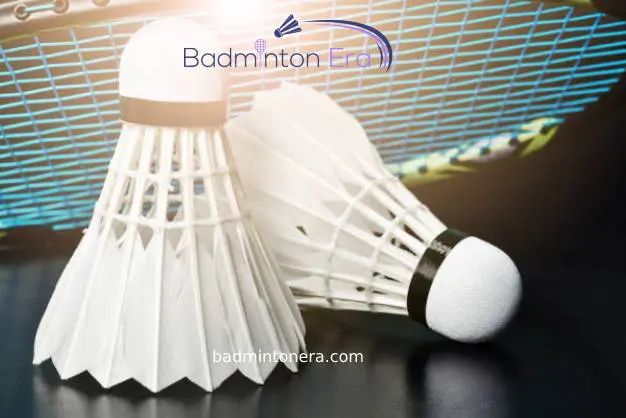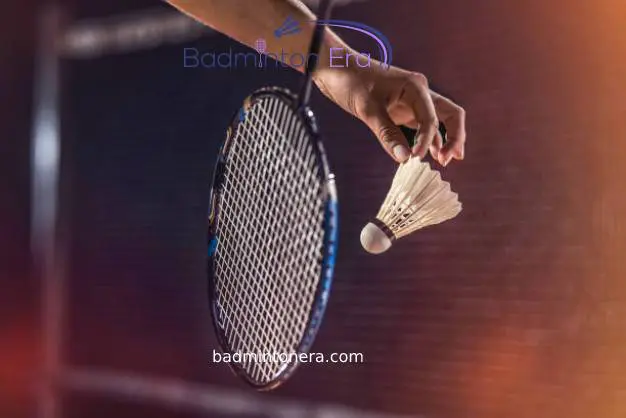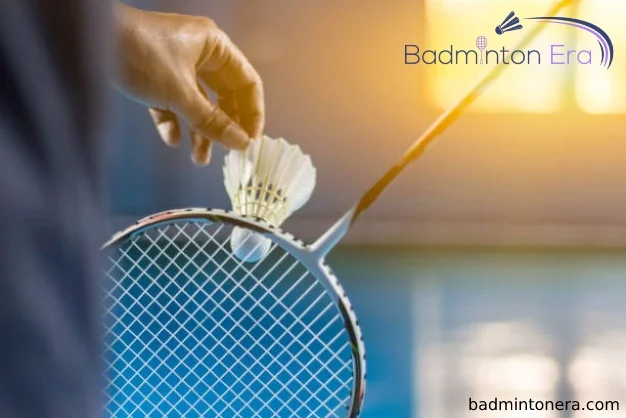All You Need To Know About Badminton Shuttlecock
What Is A Shuttlecock?
A shuttlecock, also known as a birdie, is a tool used in badminton game. It’s like a small ball with feathers. Players hit it back and forth over a net using rackets. The shuttlecock has two parts, including a head and a tail. The tail is made up of 16 feathers that overlap each other. They’re put into the head and tied together with string to keep them in place. So, when you play badminton, you’re hitting the shuttlecock with your racket to send it flying to the other side of the court.
Types Of Shuttlecocks:
Shuttlecocks, essential in the game of badminton, must adhere to specific standards set by the Badminton World Federation.They can be made from natural or synthetic materials, with two main types available: feathers and nylon/plastic.
Feather Shuttlecocks:
- Feather shuttlecocks, typically preferred by intermediate to professional-level players, offer distinct advantages suited to players at this skill level.
- Made from duck or goose feathers, with goose feathers being favored by elite players.
- These shuttlecocks provide good to excellent flight characteristics.
- They are easier to control than nylon shuttles and allow players to execute net spins and slices with precision.
- Feather shuttlecocks are not recommended for beginners, as poor technique and timing can lead to quick breakage of the feathers.
- They also have lower durability than nylon shuttles, meaning they may wear out more quickly with frequent use.
- It is recommended to store feather shuttlecocks in a generally humid environment to maintain their durability, as this prevents the feathers from becoming brittle and dry, which can lead to quicker breakage.

Synthetic Shuttlecocks:
- Synthetic shuttlecocks, primarily used by beginners, recreational players, and those at lower-level club levels, are crafted from nylon material.
- Plastic or synthetic shuttles are known for their fast-flight characteristics, as they tend to decelerate at a slower rate than feather shuttles.
- This often leads to a quicker-paced game.
- One of the standout features of plastic shuttlecocks is their excellent durability.
- They can endure extensive use and may last for up to 100 games before showing signs of wear and tear.
Hybrid Shuttlecocks:
- A relatively new innovation in shuttlecock design is the hybrid version, which combines both plastic and feather materials.
- This combination offers several advantages over traditional feather shuttlecocks.
- Firstly, hybrids tend to have longer durability because of synthetic frames that make them last longer than conventional feather shuttles.
- Additionally, they are generally cost-effective to produce, resulting in a more affordable price than full feather shuttlecocks.
- However, it’s important to note that hybrids may exhibit an inferior flight path and control when compared to high-grade full-feather shuttlecocks.

Understanding Badminton Shuttlecock Speed:
Choosing the right speed of the shuttlecock is essential for ensuring optimal gameplay, especially in the UK where speed 78 (Yonex speed 3) is the most popular choice. Let’s delve into the details of shuttle speeds to help you make an informed decision.
Shuttlecock speeds, ranging from 75 to 79, determine how far and how fast the shuttlecock travels when struck with a standard force. Lower numbers indicate slower speeds, while higher numbers indicate faster speeds. Speeds 75 and 76 are less common, particularly in the UK and Europe.
The speed of a badminton shuttlecock is influenced by three main factors: temperature, altitude, and humidity. These environmental conditions affect how the shuttlecock behaves during play. In general, slower shuttle speeds result in shorter flights and quicker deceleration while faster speeds lead to longer flights at increased velocities.
Dimensions And Sizes Of Badminton Shuttlecocks:
Badminton shuttlecocks typically have a head diameter ranging from 0.98″ to 1.1″ (25-28 mm), which expands to an overall feather diameter between 2.28″ to 2.68″ (58-68 mm). The overall length of a shuttlecock varies from 3.35″ to 3.75″ (85-95 mm), depending on the feather’s length and the height of the head. In terms of weight, a Badminton Shuttlecock typically weighs between 0.167 to 0.194 oz (4.75-5.5 g). These specifications ensure consistent performance and flight characteristics during gameplay.
Which Shuttlecock should I choose?
Before buying a badminton shuttlecock, you should consider the following factors, including:
- Type of badminton shuttle
- Speed of badminton shuttle
- Level of your play
How Long Do Shuttlecocks Last?
How long shuttlecocks last can depend on various factors, like the type of shuttlecock, how often it’s used, and the playing conditions. Generally, feather shuttlecocks last for about 10-15 hours of play, while plastic shuttlecocks can endure around 20-25 hours of play.
Which Shuttlecock Is Best For Beginners?
For beginners, it’s advisable to start with plastic shuttlecocks. They’re more budget-friendly and resilient. Additionally, the slower speed of the plastic shuttlecock offers better control, and it is beneficial for those new to the game or who don’t know much about badminton game.
If you are new to the badminton game and want more detailed guidance about badminton, shuttlecock, and playing ethics, visits our badminton guide page.







